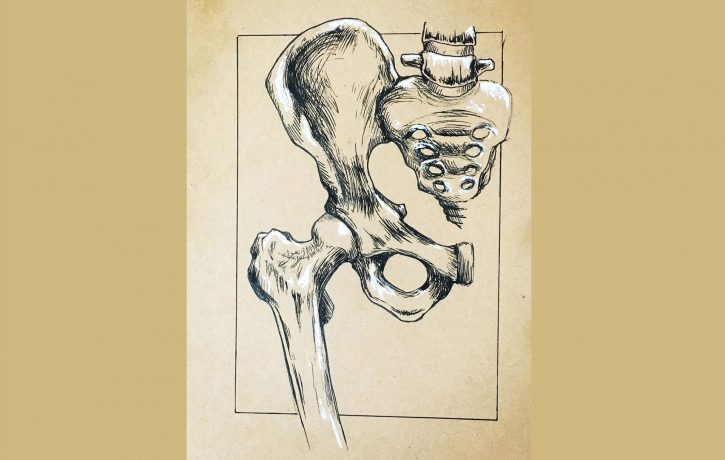Trochanteric Pain

The greater trochanter is part of the boney architecture of the femur or thigh bone. It is the bit you feel when you press against the outside of the upper thigh and it is the attachment point for most of the hip/buttock muscles.
There is a thick strap of connective tissue the runs down the outside of the thigh, from hip to knee called the iliotibial band (or you may have heard of it referred to as the I.T. Band) that lies over the greater trochanter and can be an irritant leading to pain in the outside of the thigh.
Lateral hip pain is often referred to as trochanteric bursitis but this is a specific condition with specific signs and symptoms over and above just pain in that region of the body.
Bursitis refers to the inflammation of a bursae. It just so happens that there are rather large bursae that sit neatly between the greater trochanter and the ITBand. Therefore, it can only be bursitis if there are signs of inflammation around the upper thigh such as heat and swelling or redness of the skin.
Quite often, lateral hip pain does not present with these other signs in which case it would be inappropriate to label it trochanteric bursitis. The term greater trochanteric pain syndrome (GTPS) was introduced about 15 years ago to cover lateral hip pain without the inflammatory signs of heat swelling and skin colour changes.
Bursitis still falls under the umbrella of GTPS but it also covers conditions like gluteal tendinopathy where the tendons become irritated at their insertion to the greater trochanter under the IT Band.
Certain habits can irritate the greater trochanter and the tissues around it, such as long periods of sitting with legs crossed, or standing with all weight hitched on one leg, or laying directly on the affected hip.
Sudden changes in the type or amount of certain exercise or activities can also lead to irritation and cause pain so activity modification is something that can help to settle the pain but the rehab needs to be specific to improve the quality of the hip muscles that attach to the greater trochanter.
Strengthening muscles improve their tolerance to activity as well as having an anti-inflammatory
effect. Any of the conditions that affect the greater trochanter will respond positively to anti-
inflammatory mechanisms such as our diet and exercise.
If you have hip pain and feel it could be something to do with the trochanter then feel free to book in for an assessment, treatment and advice session. If you are concerned about these types of injuries and need help with strategies to improve your quality of life then contact The Body Matters on 01702 714968, where we can direct you to Matthew Oliver.
- Deepen Embodiment: Somatic Breathing with the Realization Process - 20th June 2025
- How Massage Transforms Muscle and Physical Health - 16th May 2025
- What is Traditional Chinese Medicine (TCM)? - 29th April 2025
